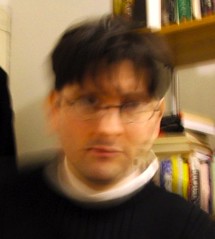
I recently talked to a young Clinton supporter who was so disappointed in the likely outcome of the Democratic primaries that she was not sure that she would have the heart to vote at all in November. The close competition between Obama and Clinton seems to have generated enough mistrust and resentment to make you wonder whether the rift in the party will be repaired in time for the general election. And she is not the only person that I know with misgivings.
Those of us with suspicious minds -- and there is plenty of grounds for suspicion these days -- might well wonder: did Clinton and Obama emerge from the rest of the Democratic field as the result of a divide-and-conquer strategy, in which two important Democratic constituencies were set at odds with each other?
What mechanism of influence could bring about such a state of affairs?
Perhaps... major media coverage that neglected other viable candidates in the Democratic field in favor of two chosen ones. As just one example of the way in which an editorial message can be blanketed across the spectrum of major outlets, I would point to the sinking of Howard Dean's primary run in 2004 by the nonstop broadcast of the "I have a scream" footage -- a non-event in itself, devoid of content, that was used to sideline a candidate whose strong opposition to the Iraq war, and whose questioning of the official account of the 9/11 attack, evidently caused him to be blackballed in the media.
A few weeks ago, I happened to see a Ken Burns documentary on PBS that suggested to me a nineteenth-century parallel to the recent competition for a historic "first" for the U.S. Presidency. The film documentary, entitled
Not for Ourselves Alone: The Story of Elizabeth Cady Stanton and Susan B. Anthony, includes an account of a rift that happened among radical reformers at the end of the U.S. Civil War. In the wake of the war, supporters of women's suffrage, led by Stanton and Anthony, were resentful that the proposed Fifteenth Amendment to the U.S. Constitution would give the vote to freed male slaves, but not to women, white or black. The women lobbied for a change in the text of the proposed amendment that would make universal suffrage the law of the land. Having previously campaigned on behalf of abolitionism, the suffragettes were told by the male leaders of the abolitionist movement that the end of the war was "the Negro's Hour" and that they would have to wait, perhaps another generation or more, for their turn. In response, Stanton's oratory took a racist turn as she scoffed at the suggestion that white women ought to "stand aside and see Sambo walk into the kingdom first."
 |
|  |
| Elizabeth Cady Stanton with daughter, 1856 |
| Frederick Douglass |
Years before, at the birth of the women's suffrage movement -- the Women's Rights Convention held in Seneca Falls, NY in 1848 -- Frederick Douglass had given his much-needed support to the radical position, first proposed by Stanton, that women should demand the right to vote. The Burns documentary showed how, almost twenty years later, Douglass and Stanton parted ways over the suffrage amendment -- a case of former allies reduced to fighting for what scraps could be had from the table.
Recent news stories about a
Pentagon-coordinated domestic propaganda campaign to consolidate U.S. public support for war against Iraq, or about White House lies as related by former Bush Press Secretary Scott McClellan in his exposé
What Happened: Inside the Bush White House and Washington's Culture of Deception leave me compunction-free when it comes to speculation about where else the news media has steered, and is steering, us wrong. But I should also acknowledge that, even if the division among the Democrats gives a badly-needed boost to the GOP candidate in the context of a "change election" season, the Obama-Clinton rift may have arisen spontaneously, as a result of the merits and appeal of the available candidates as well as the mood and demographics of the primary participants.
Labels: Fifteenth Amendment Hillary Clinton Barack Obama Elizabeth Cady Stanton Frederick Douglass women's suffrage feminism emancipation civil war Constitution Democratic Presidential nomination primaries
